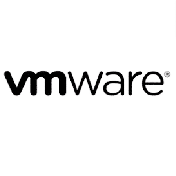Seminarinhalt
Produktausrichtung:
VMware ESXi 8.0
VMware vCenter Server 8.0
Am Ende des Kurses sollten Sie in der Lage sein, die folgenden Ziele zu erreichen:
- Beschreiben von Prinzipien und Verfahren zur Fehlerbehebung
- Verwendung des vSphere-Clients, der Befehlszeile und von Protokolldateien zur Konfiguration, Diagnose und Behebung von Problemen in vSphere
- Erläuterung der wichtigsten vSphere-Protokolldateien aus Sicht der Fehlerbehebung
- Beschreiben Sie die Vorteile und Möglichkeiten von VMware Skyline
- Identifizieren von Netzwerkproblemen durch Untersuchung der gemeldeten Symptome und Behebung der gemeldeten Probleme
- Identifizieren der Storage-Probleme durch Untersuchung der gemeldeten Symptome und Behebung der gemeldeten Probleme
- Fehlerbehebung bei vSphere-Cluster-Fehlerszenarien und Analyse möglicher Ursachen
- Diagnose gängiger Probleme mit VMware vSphere® High Availability (vSphere HA) und Bereitstellung von Lösungen
- Behebung von Problemen mit virtuellen Maschinen, einschließlich Migrationsproblemen, Snapshot-Problemen und Konnektivitätsproblemen
- Erkennen von Problemen mit VMware ESXi™-Hosts und VMware vCenter Server®, Analysieren von Fehlerszenarien und Finden von Lösungen
- Fehlerbehebung bei Performance-Problemen mit vSphere-Komponenten
Programm
• Introductions and course logistics
• Course objectives
2 Introduction to Troubleshooting
• Define the scope of troubleshooting
• Use a structured approach to solve configuration and operational problems
• Apply troubleshooting methodology to diagnose faults and make troubleshooting efficient
3 Troubleshooting Tools
• Identify the utilities and tools used to run commands
• Identify how to access the vSphere ESXi shell
• Run commands to view, configure, and manage vSphere components
• Use Standalone ESXCLI for troubleshooting
• Run ESXCLI commands from the Standalone ESXCLI tool
• Use Data Center CLI commands for troubleshooting
• Run commands to view, configure, and manage your vSphere components
• Identify the best tool to use for CLI troubleshooting
• Locate important log files
• Identify how to use log files in troubleshooting
• Describe the benefits and capabilities of VMware Skyline™
• Explain how VMware Skyline works at a high-level
• Identify the types of health information provided by Skyline™ Health
• Identify uses for VMware Skyline™ Advisor
• Describe the support bundle REST API
• Use the support bundle REST API
4 Troubleshooting Virtual Networking
• Analyze and troubleshoot standard switch problems
• Analyze and troubleshoot virtual machine connectivity problems
• Analyze and troubleshoot management network problems
• Analyze and troubleshoot distributed switch problems
5 Troubleshooting Storage
• Recognize components in the vSphere storage architecture
• Identify the possible causes of problems in the various types of datastores
• Analyze the common storage connectivity and configuration problems and discuss the possible causes
• Resolve the storage connectivity problems, correct misconfigurations, and restore LUN visibility
• Analyze log file entries to identify the root cause of storage problems
• Use ESXi and Linux commands to troubleshoot storage problems
• Investigate ESXi storage issues
• Troubleshoot virtual machine snapshots
• Troubleshoot storage performance problems
• Recognize how multipathing works
• Identify the common causes of missing paths
• Resolve the missing path problems between hosts and storage devices
6 Troubleshooting vSphere Clusters
• Identify and troubleshoot potential vSphere HA problems
• Analyze and solve vSphere potential vMotion problems
• Diagnose and troubleshoot potential vSphere DRS problems
7 Troubleshooting Virtual Machines
• Describe virtual machine files
• Identify, analyze, and solve virtual machine snapshot problems
• Discuss virtual machine files and disk content IDs
• Troubleshoot virtual machine power-on problems
• Identify possible causes and troubleshoot virtual machine connection state problems
• Diagnose and recover from VMware Tools™ installation failures
8 Troubleshooting vCenter Server and ESXi
• Analyze and resolve vCenter service problems
• Diagnose and troubleshoot vCenter database problems
• Use vCenter appliance shell and the Bash shell to identify and solve problems
• Identify and troubleshoot ESXi host problems
Zielgruppen
Vorkenntnisse
• Install and configure ESXi
• Install vCenter Server
• Create vCenter Server objects, such as data centers and folders
• Create and modify a standard switch
• Create and modify a distributed switch
• Connect an ESXi host to NAS, iSCSI, or Fibre Channel storage
• Create a VMware vSphere VMFS datastore
• Modify a virtual machine’s hardware
• Migrate a virtual machine with VMware vSphere® vMotion® and VMware vSphere® Storage vMotion®
• Configure and manage a VMware vSphere® Distributed Resource SchedulerTM cluster
• Configure and manage a VMware vSphere HA cluster
• Basic knowledge of command line tools like ESXCLI, DCLI, and PowerCLI





VMware vSphere: Troubleshooting [V8]
08.11.2024 — Franz D.